The global combined quasi-neutral and zero-electron-mass limit of non-isentropic Euler-Poisson systems
2022-08-25YongfuYANG杨永富
Yongfu YANG(杨永富)+
College of Science,Hohai Unioersitg,Nanjing 211100,China E-mail: ylyang@hhu.edu.cn
Qiangchang JU(踞强昌)
Institute of Applied Physics and Computational Mathematics,Beijing 100088,China E-mail : qiangchang@iapcm.ac.cn
Shuang ZHOU(周爽)
Chengri Junior High School,Suzhou 215128,China E-mail : zhoushuang3210@163.com

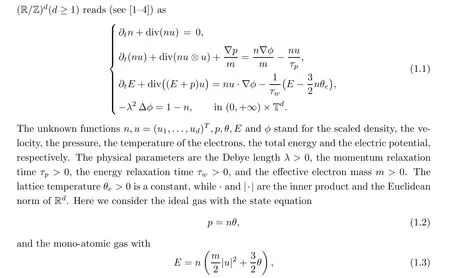
which corresponds to the choice of the adiabatic exponent γ =53. In the Poisson equation in (1.1), the constant 1 stands for the ion density for a plasma or the doping profile for a semiconductor.
In recent decades, due to its physical importance and its mathematical challenges, there has appeared a lot of literature on the asymptotic limit problem for semiconductors or plasmas models with small physical parameters (see [4–12]). However, most of the work we know has been done only for the case in which one of the physical parameters tends to zero and the others keep constant. In particular, the asymptotic limits of the isentropic Euler-Poisson system have been studied extensively, and it is well-known that the zero-relaxation limiting system is the classical drift-diffusion system,and the zero-electron-mass limit or the quasi-neutral limit leads to the incompressible Euler equations [5, 12–14]. Recently, in [8], Peng established delicately unified energy estimates to show the global-in-time convergence of the Euler-Poisson system for each of the above three limits.
Compared with the isentropic case,there are only a few results for the non-isentropic Euler-Poisson system,for which the appearance of an energy equation gives rise to more difficulties in mathematical analysis. Liu and Peng in [4] partially extended the global-in-time convergence results in [8] to the non-isentropic case, and in particular, verified the zero-relaxation limit for the case in which τwis a function of τpof the form τw= O(τrp) with r ∈[-1,1]. The readers can also refer to [9, 11] for similar global-in-time convergence results concerning other plasmal models.
It is also very interesting to consider the asymptotic limits when two or more parameters in (1.1) tend to zero simultaneously. For when it is assumed that the physical parameters are dependent, Peng and Wang [15, 16] rigorously verified the local-in-time combined nonrelativistic and quasi-neutral limit for one-fluid Euler-Maxwell equations and two-fluid Euler-Maxwell equations,respectively. The local-in-time combined asymptotic limit was also studied for other complex models ([17, 18]).
In this paper,we fix τp=τw=1 in order to focus on the uniformly global convergence with respect to the Debye length and the effective electron mass. As usual, we denote that m=ε2,with ε ∈(0,1]. Then, for smooth solutions in the non-vacuum field, the momentum equation and the energy equation in (1.1) are equivalent to
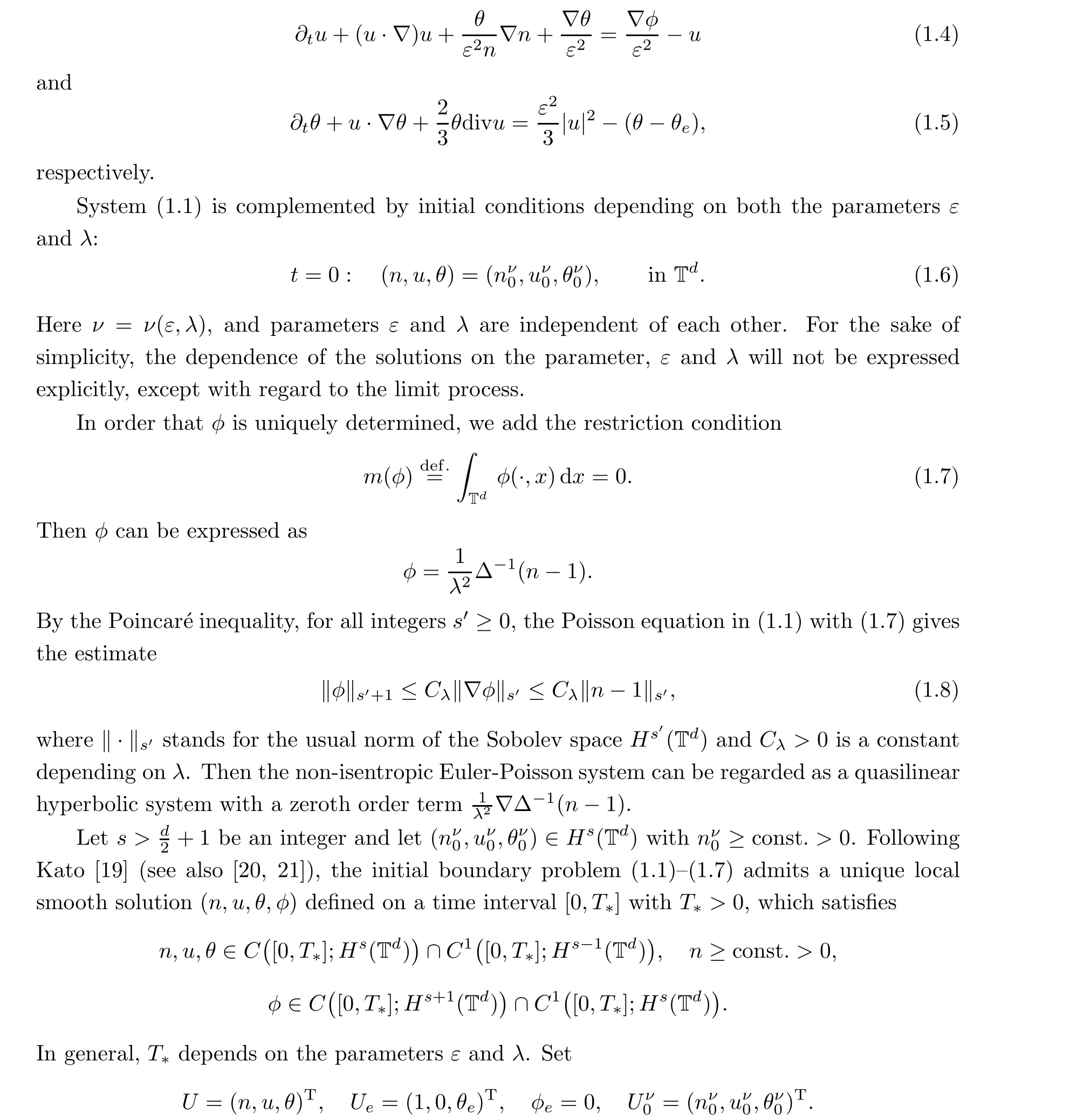
It is clear that(Ue,φe),which is called an equilibrium state of the system,is a constant solution of (1.1).

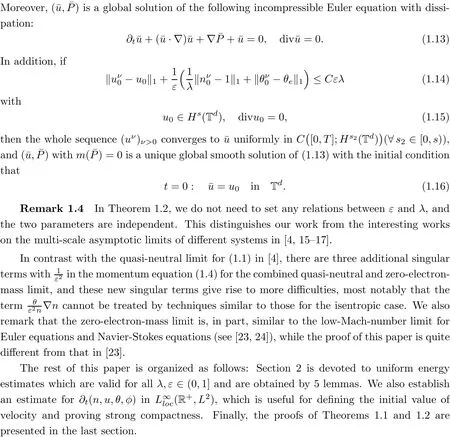
2 Uniform Energy Estimate With Respect to Parameters ε and λ
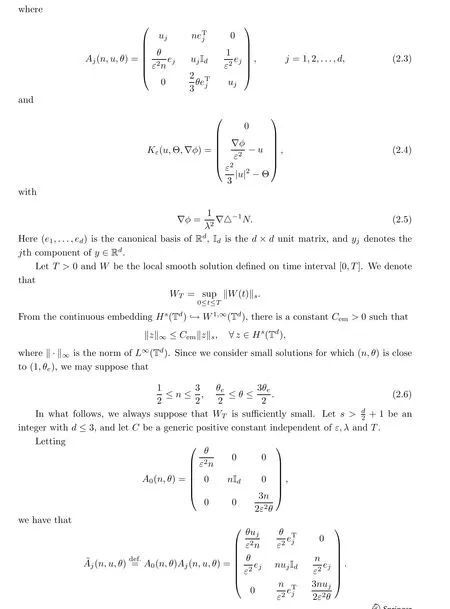
Under assumption (2.6), it is clear that A0(n,θ) is symmetric and uniformly positive definite,and that ˜Aj(n,u,θ) is symmetric for all 1 ≤j ≤d. As a result, system (2.2) for W is symmetrizably hyperbolic.
The next two lemmas will be used in the proof of the energy estimates. Lemma 2.1 is a refined version of Moser-type calculus inequalities (see [21, 24]) and is proved in [25]. Lemma 2.2 is proved in [8] and only depends on the Poisson equation λ2Δφ=N.
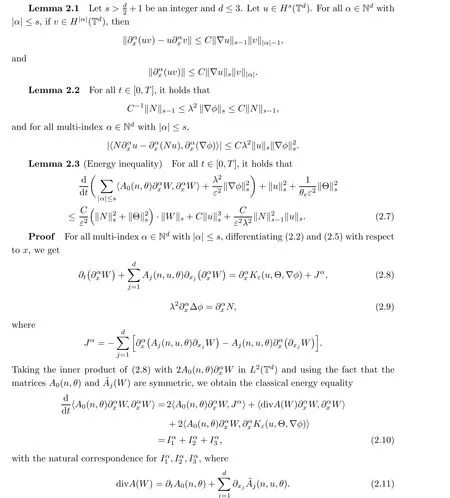

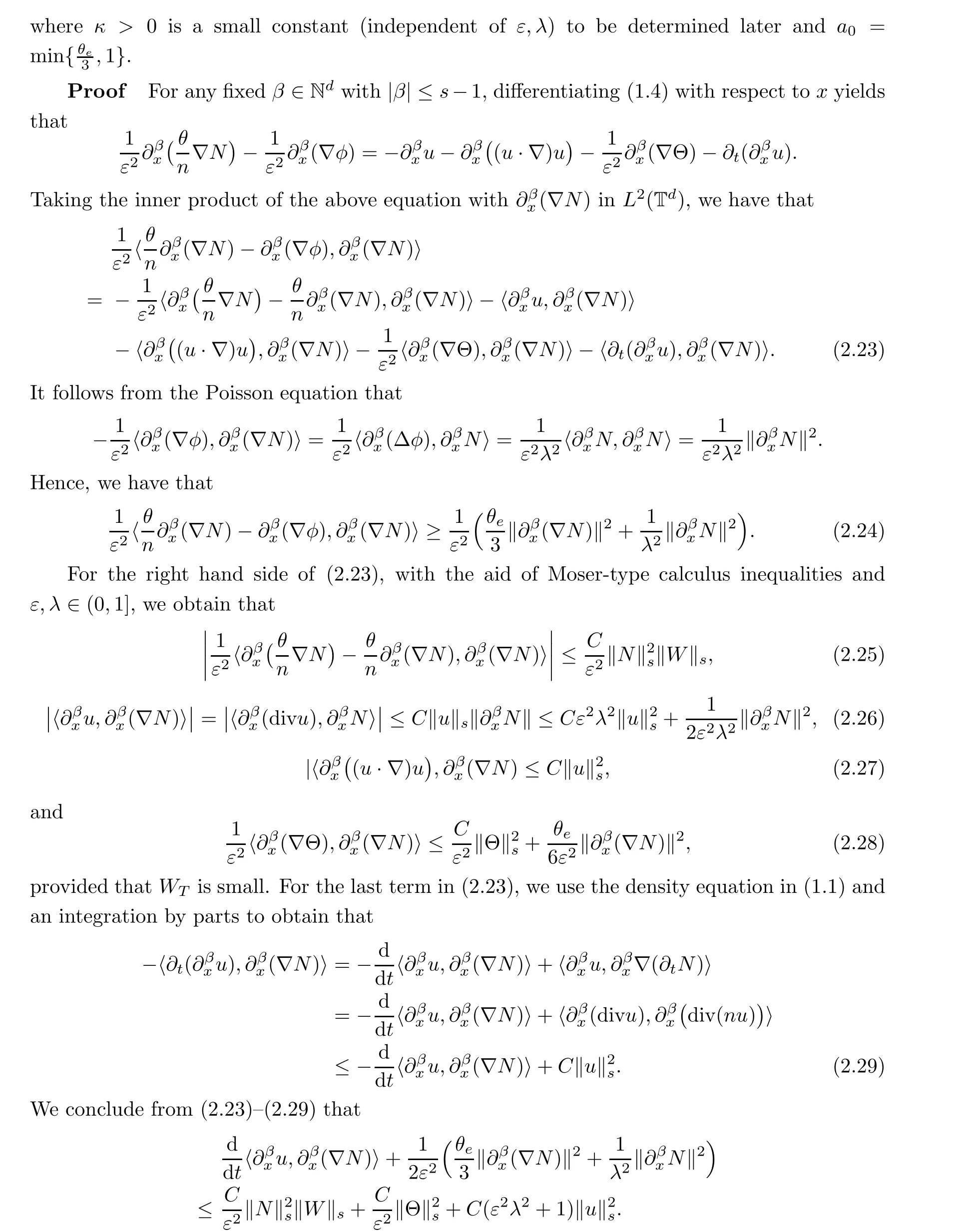
Summing up these inequalities for all |β|≤s-1 and multiplying the resulting inequality by κ yields (2.22) and completes the proof of Lemma 2.3. □
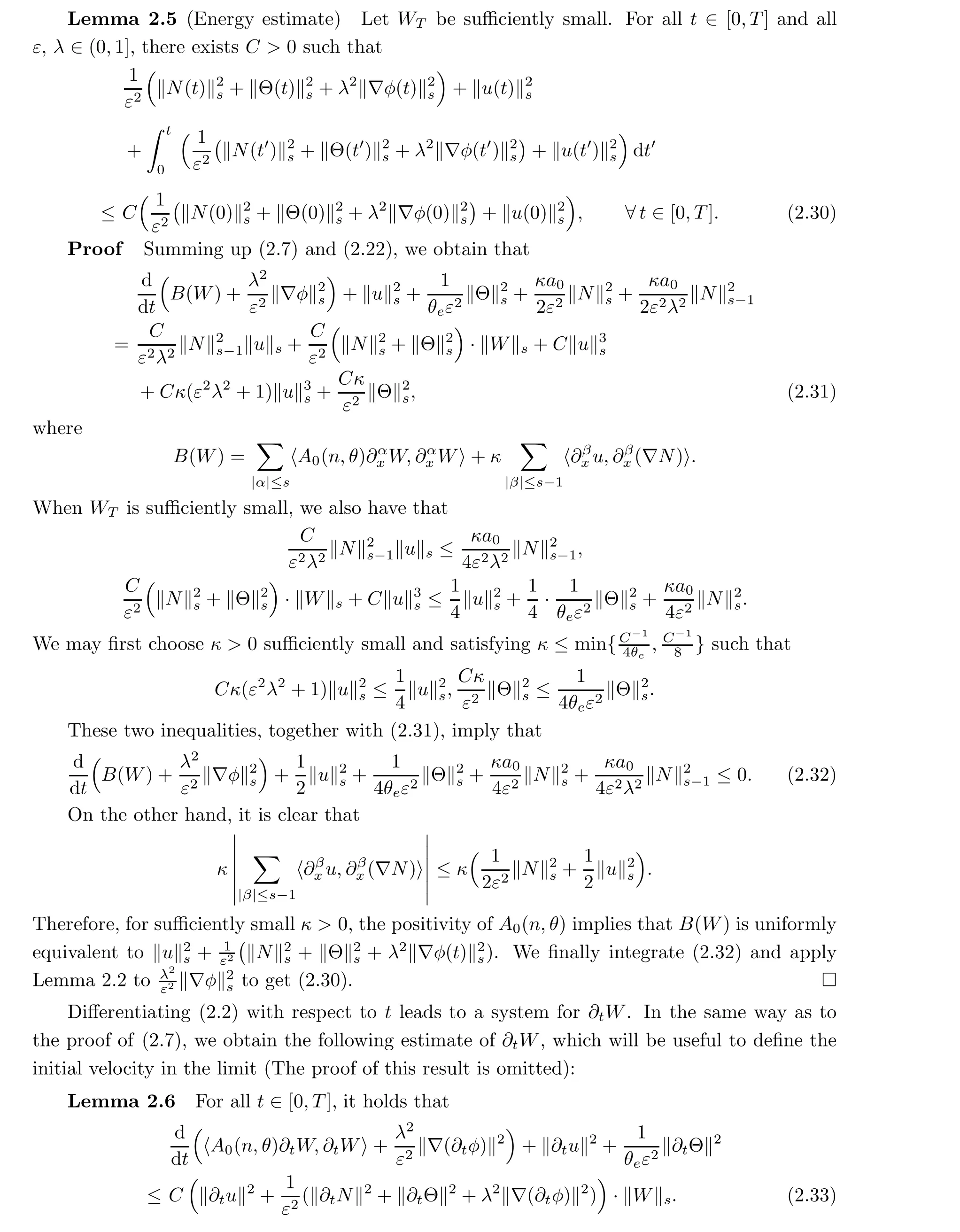
3 Proof of the Main Theorems
3.1 Proof of Theorem 1.1

3.2 Proof of Theorem 1.3
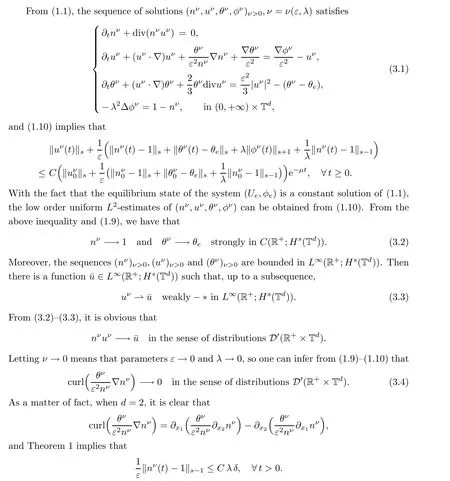
The case for d = 3 can be treated in a similar way. Passing to the limit in the sense of distribution in the first equation of (3.1), we obtain
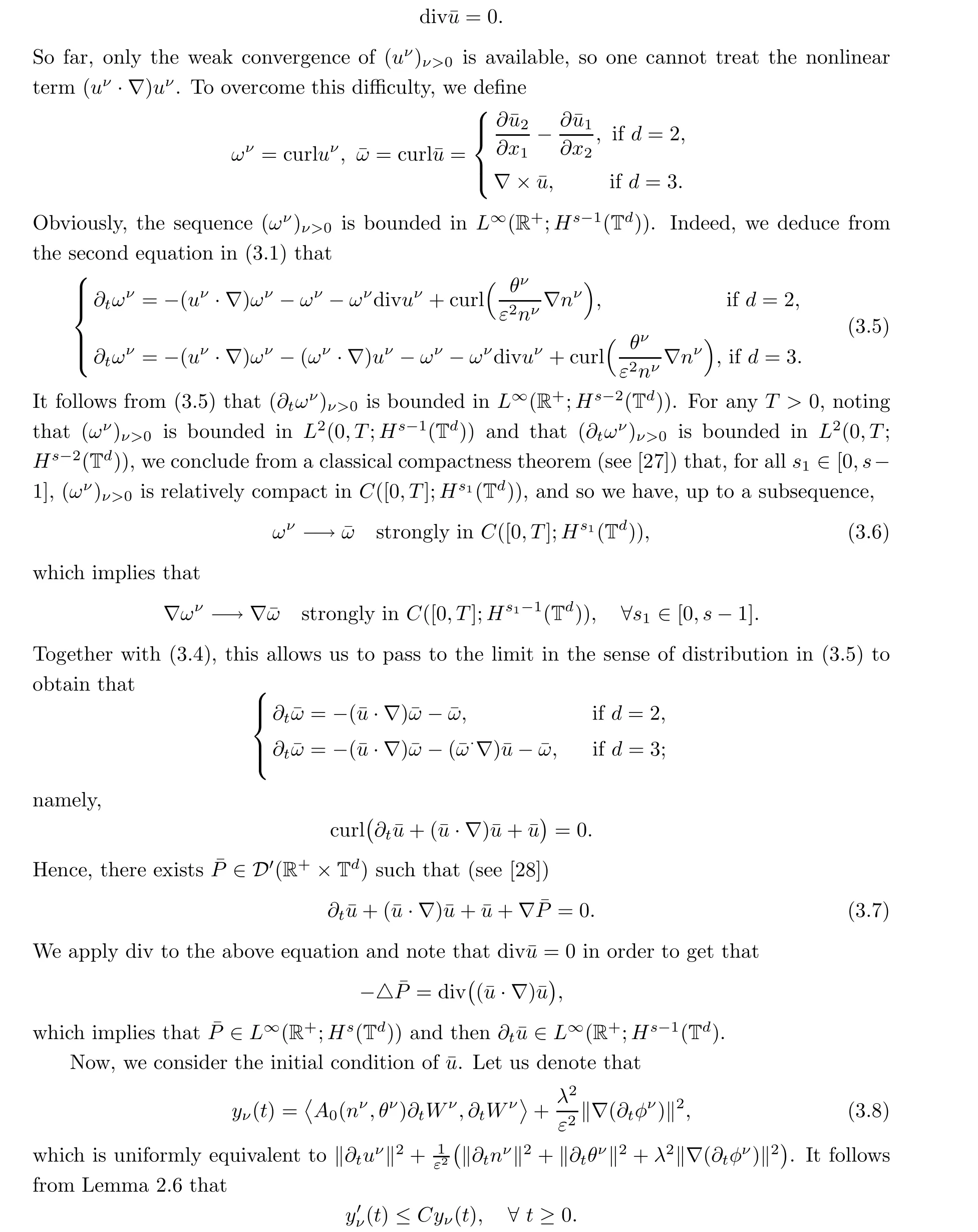
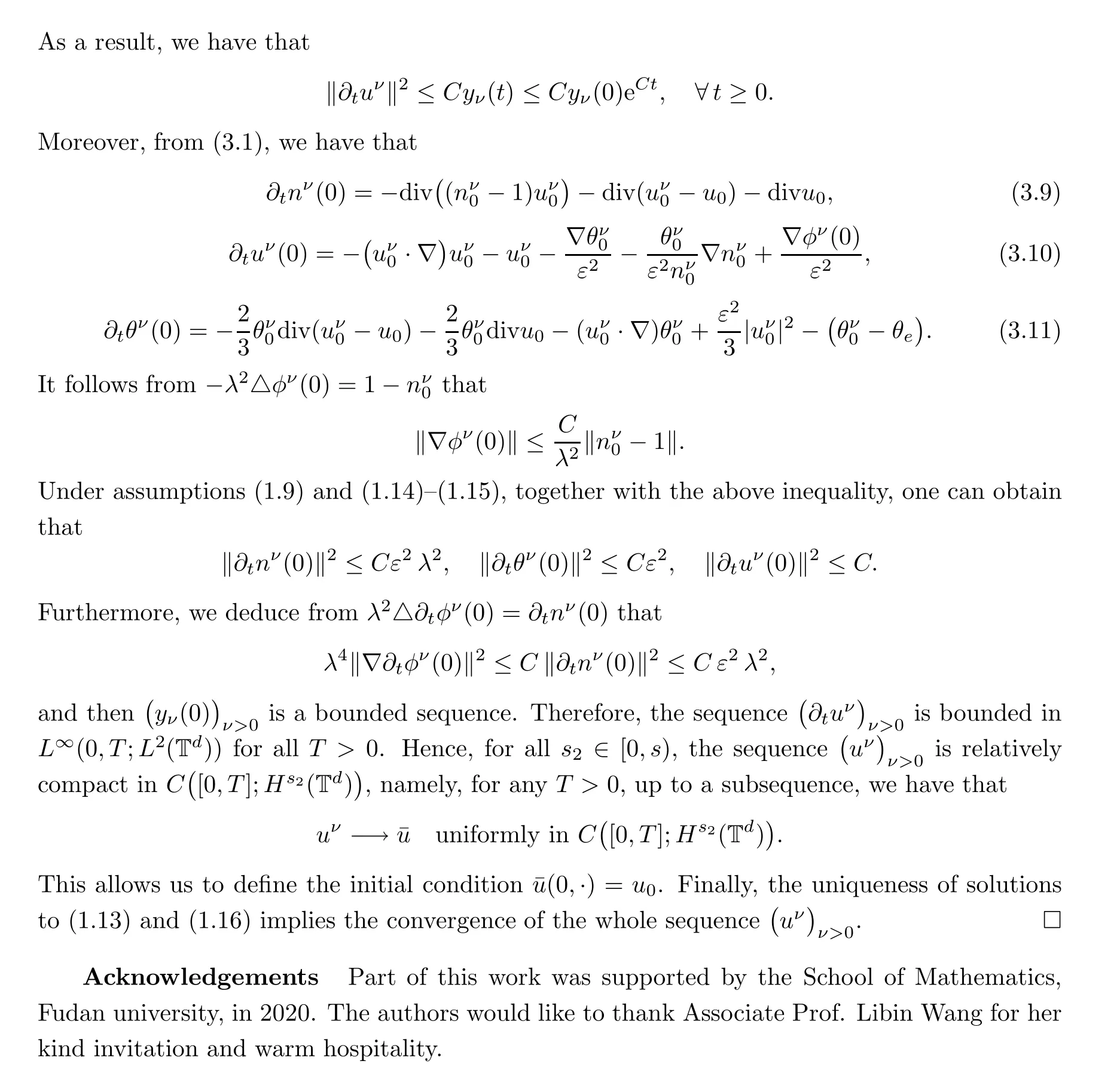
杂志排行
Acta Mathematica Scientia(English Series)的其它文章
- ITERATIVE ALGORITHMS FOR SYSTEM OF VARIATIONAL INCLUSIONS IN HADAMARD MANIFOLDS*
- Time analyticity for the heat equation on gradient shrinking Ricci solitons
- The metric generalized inverse and its single-value selection in the pricing of contingent claims in an incomplete financial market
- Some further results for holomorphic maps on parabolic Riemann surfaces
- Global well-posedness of the 2D Boussinesq equations with partial dissipation
- A uniqueness theorem for holomorphic mappings in the disk sharing totally geodesic hypersurfaces
